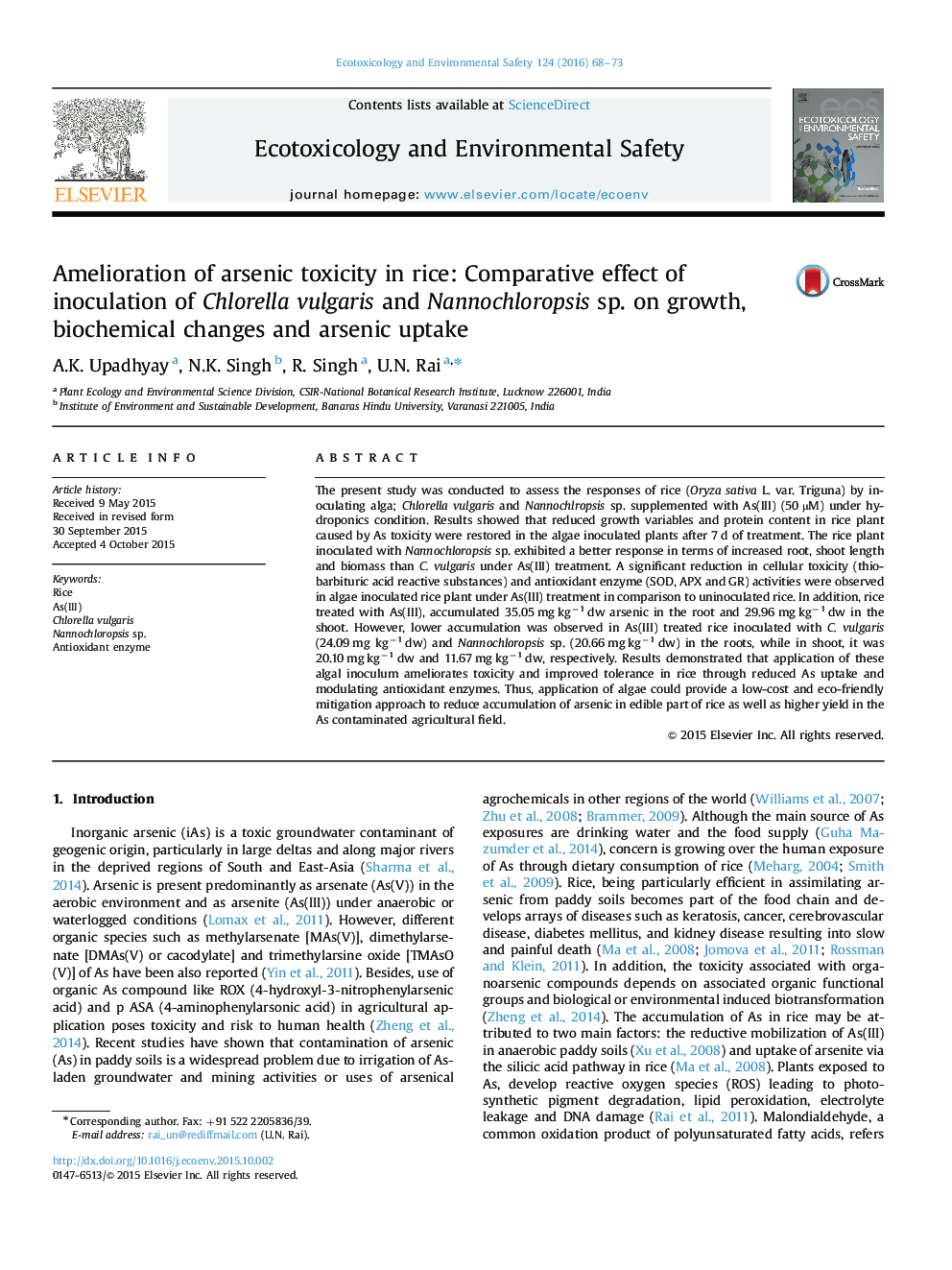| Article ID | Journal | Published Year | Pages | File Type |
|---|---|---|---|---|
| 6312028 | Ecotoxicology and Environmental Safety | 2016 | 6 Pages |
Abstract
The present study was conducted to assess the responses of rice (Oryza sativa L. var. Triguna) by inoculating alga; Chlorella vulgaris and Nannochlropsis sp. supplemented with As(III) (50 µM) under hydroponics condition. Results showed that reduced growth variables and protein content in rice plant caused by As toxicity were restored in the algae inoculated plants after 7 d of treatment. The rice plant inoculated with Nannochloropsis sp. exhibited a better response in terms of increased root, shoot length and biomass than C. vulgaris under As(III) treatment. A significant reduction in cellular toxicity (thiobarbituric acid reactive substances) and antioxidant enzyme (SOD, APX and GR) activities were observed in algae inoculated rice plant under As(III) treatment in comparison to uninoculated rice. In addition, rice treated with As(III), accumulated 35.05 mg kgâ1 dw arsenic in the root and 29.96 mg kgâ1 dw in the shoot. However, lower accumulation was observed in As(III) treated rice inoculated with C. vulgaris (24.09 mg kgâ1 dw) and Nannochloropsis sp. (20.66 mg kgâ1 dw) in the roots, while in shoot, it was 20.10 mg kgâ1 dw and 11.67 mg kgâ1 dw, respectively. Results demonstrated that application of these algal inoculum ameliorates toxicity and improved tolerance in rice through reduced As uptake and modulating antioxidant enzymes. Thus, application of algae could provide a low-cost and eco-friendly mitigation approach to reduce accumulation of arsenic in edible part of rice as well as higher yield in the As contaminated agricultural field.
Related Topics
Life Sciences
Environmental Science
Environmental Chemistry
Authors
A.K. Upadhyay, N.K. Singh, R. Singh, U.N. Rai,
